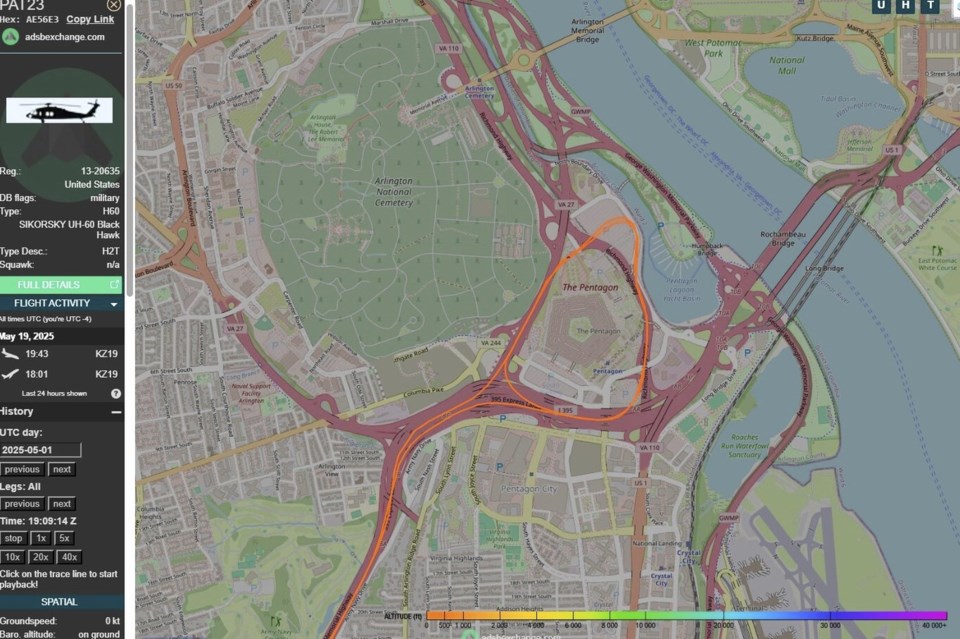WASHINGTON (AP) — Military air traffic controllers lost contact with an Army helicopter for about 20 seconds as it neared the Pentagon on the flight that caused two commercial jets to abort their landings this month at a Washington airport, the Army told The Associated Press on Friday.
The aborted landings on May 1 added to general unease about continued close calls between government helicopters and commercial airplanes near Ronald Reagan Washington National Airport following a deadly midair collision in January between a passenger jet and an Army helicopter that killed 67 people.
In March, the Federal Aviation Administration announced that helicopters would be permanently restricted from flying on the same route where the collision occurred. After the May 1 incident, the Army paused all flights into and out of the Pentagon as it works with the FAA to address safety issues.
Brig. Gen. Matthew Braman, the head of Army aviation, told the AP in an exclusive interview that the controllers lost contact with the Black Hawk because a temporary control tower antenna was not set up in a location where it would be able to maintain contact with the helicopter as it flew low and rounded the Pentagon to land. He said the antenna was set up during construction of a new control tower and has now been moved to the roof of the Pentagon.
Braman said federal air traffic controllers inside the Washington airport also didn't have a good fix on the location of the helicopter. The Black Hawk was transmitting data that should have given controllers its precise location, but Braman said FAA officials told him in meetings last week that the data the controllers were getting from multiple feeds and sensors was inconclusive, with some of it deviating by as much as three-quarters of a mile.
“It certainly led to confusion of air traffic control of where they were,” Braman said.
The FAA declined to comment on whether its controllers could not get a good fix on the Black Hawk's location due to their own equipment issues, citing the ongoing crash investigation by the National Transportation Safety Board.
Transportation Secretary Sean Duffy is pushing to have the agency modernize its air traffic control systems and equipment, which has failed controllers responsible for Newark Liberty Internal Airport’s airspace at critical moments in recent weeks.
In the initial reporting on the aborted landings, an FAA official suggested the Army helicopter was on a “scenic route.”
But the ADSB-Out data , which the Army shared with the AP on Friday, shows the crew hewed closely to its approved flight path — directly up the I-395 highway corridor, which is called Route 5, then rounding the Pentagon.
FAA air traffic controllers at the airport aborted the landing of a Delta Air Lines Airbus A319 during the Black Hawk's initial flight toward the Pentagon because they realized both aircraft would be nearing the Pentagon around the same time, Braman said.
Because of the 20-second loss of contact, the Pentagon's tower did not clear the Black Hawk to land, so the helicopter circled the Pentagon a second time. That's when air traffic controllers at the airport decided to abort the landing of a second jet, a Republic Airways Embraer E170, because they did not have a confident fix on the Black Hawk's location, Braman said.
Tara Copp, The Associated Press


